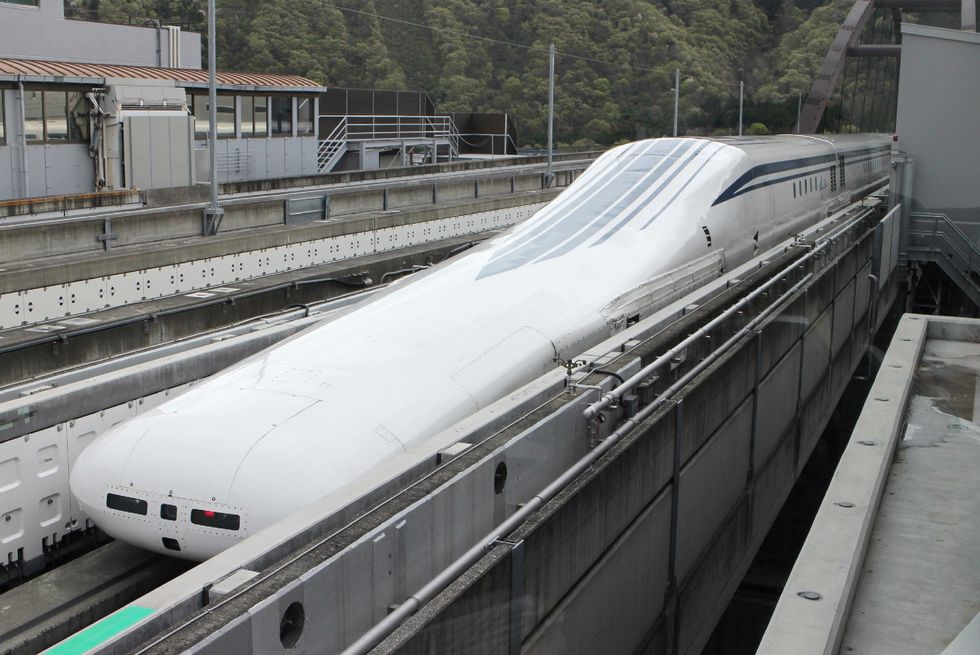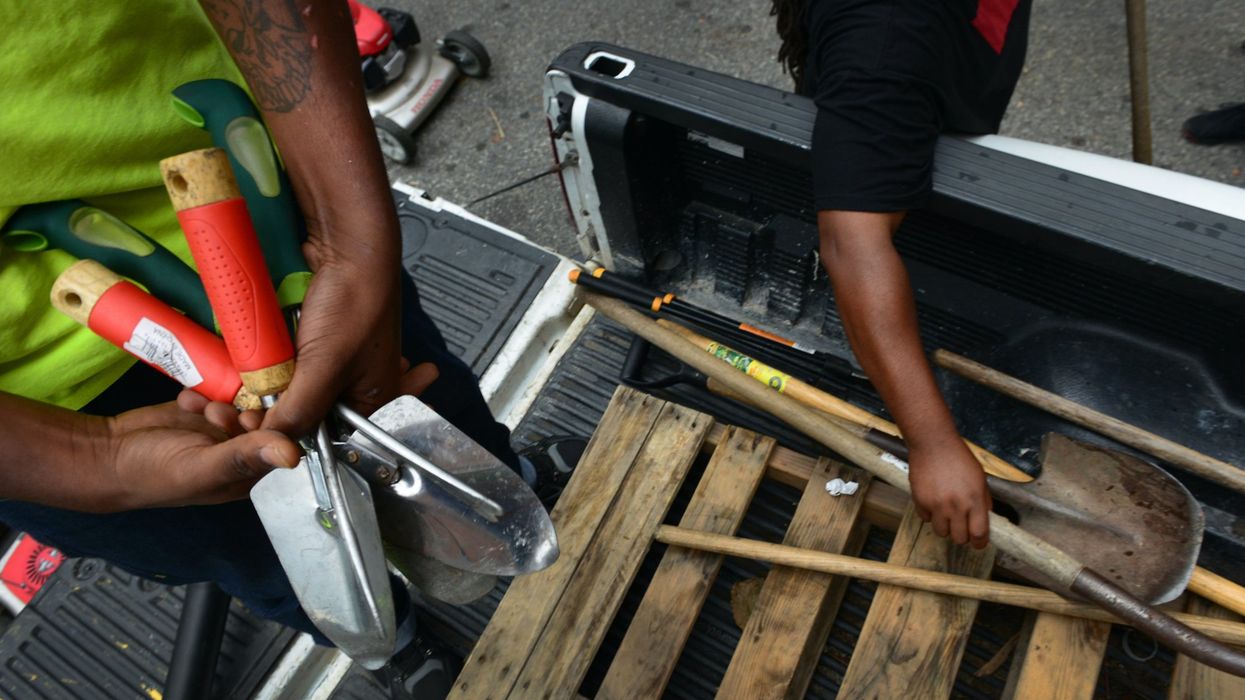TOKYO (TheBlaze/AP) — A Japanese maglev that is the fastest passenger train in the world broke its own speed record this week.
Operator JR Central said the train reached 375 miles per hour (603 kilometers per hour) in a test run on Tuesday, surpassing its previous record of 361 mph (581 kph) set in 2003. The train traveled for just over a mile (1.8 kilometers) at a speed exceeding 373 mph (600 kph).
 Central Japan Railway's maglev — short for "magnetic levitation" — train returns to the station after setting a new world speed record in a test run near Mount Fuji, clocking more than 600 kilometres (373 miles) an hour on April 21, 2015. The new record came less than a week after the company clocked 590kph, by breaking its own 2003 record of 581 kph. (JIJI PRESS/AFP/Getty Images)
Central Japan Railway's maglev — short for "magnetic levitation" — train returns to the station after setting a new world speed record in a test run near Mount Fuji, clocking more than 600 kilometres (373 miles) an hour on April 21, 2015. The new record came less than a week after the company clocked 590kph, by breaking its own 2003 record of 581 kph. (JIJI PRESS/AFP/Getty Images)
Japan's high-speed rail services are among the most advanced in the world, with hundreds of trains running each day with minimal delays. However, unlike regular shinkansen or "bullet trains" that run on steel rails, magnetic levitation trains hover above rails, suspended by powerful magnets.
Here's a look at the train in action:
The Maglev Test Line, near Mount Fuji about 80 kilometers (50 miles) west of Tokyo, is developing technology for use on a future 410-kilometer (250-mile) link that will reduce travel time between Tokyo and Osaka to just over an hour. The current minimum by bullet train is nearly three hours.
The maglev trains, begun as a project of Japan Airlines and the national railways with government support, have undergone decades of testing. Construction of the Tokyo-Osaka link, which is expected to cost more than 9 trillion yen ($76 billion), began in 2014.
 This Central Japan Railway hand out picture shows passengers watching a monitor in the company's seven-car maglev train. (JIJI PRESS/AFP/Getty Images)
This Central Japan Railway hand out picture shows passengers watching a monitor in the company's seven-car maglev train. (JIJI PRESS/AFP/Getty Images)
The line, which will mostly run under mountains, is due to begin operations in the late 2020s. A similar system operates in Shanghai, linking its airport in the seaside suburbs of Pudong to the city's subway system.
"I was moved just like many other visitors here today," Takeo Ookanda, who witnessed the record-setting run, told CNN. "This maglev project ... [increases] the hope that Japan can have a good growth again in the future."
The company has proposed bringing the technology to the U.S., the Verge reported. CNN pointed out that the fastest passenger train in the U.S., Amtrak's Acela, tops out at 150 mph, but usually only runs at half that speed.

 Central Japan Railway's maglev — short for "magnetic levitation" — train returns to the station after setting a new world speed record in a test run near Mount Fuji, clocking more than 600 kilometres (373 miles) an hour on April 21, 2015. The new record came less than a week after the company clocked 590kph, by breaking its own 2003 record of 581 kph. (JIJI PRESS/AFP/Getty Images)
Central Japan Railway's maglev — short for "magnetic levitation" — train returns to the station after setting a new world speed record in a test run near Mount Fuji, clocking more than 600 kilometres (373 miles) an hour on April 21, 2015. The new record came less than a week after the company clocked 590kph, by breaking its own 2003 record of 581 kph. (JIJI PRESS/AFP/Getty Images)
 This Central Japan Railway hand out picture shows passengers watching a monitor in the company's seven-car maglev train. (JIJI PRESS/AFP/Getty Images)
This Central Japan Railway hand out picture shows passengers watching a monitor in the company's seven-car maglev train. (JIJI PRESS/AFP/Getty Images)





